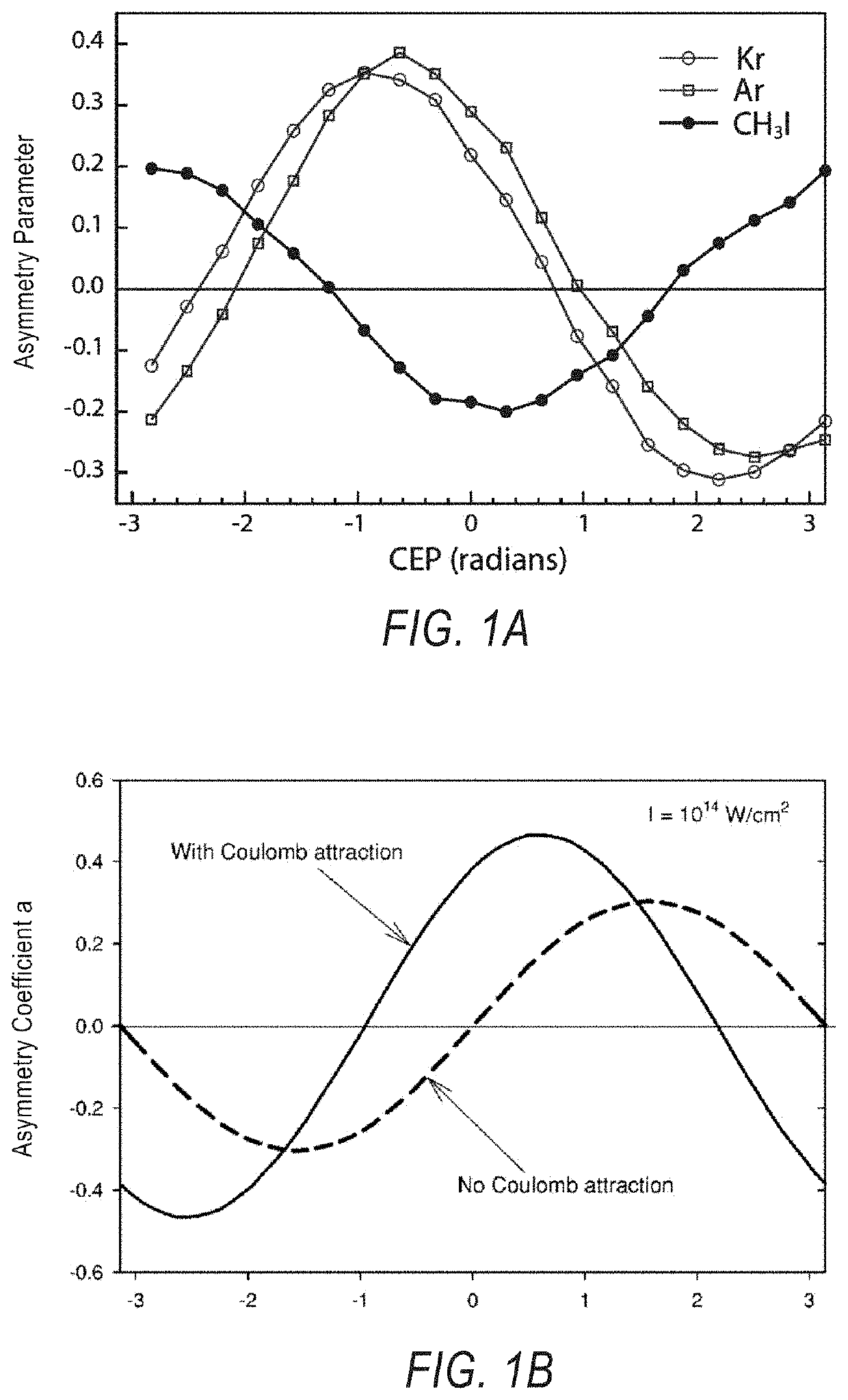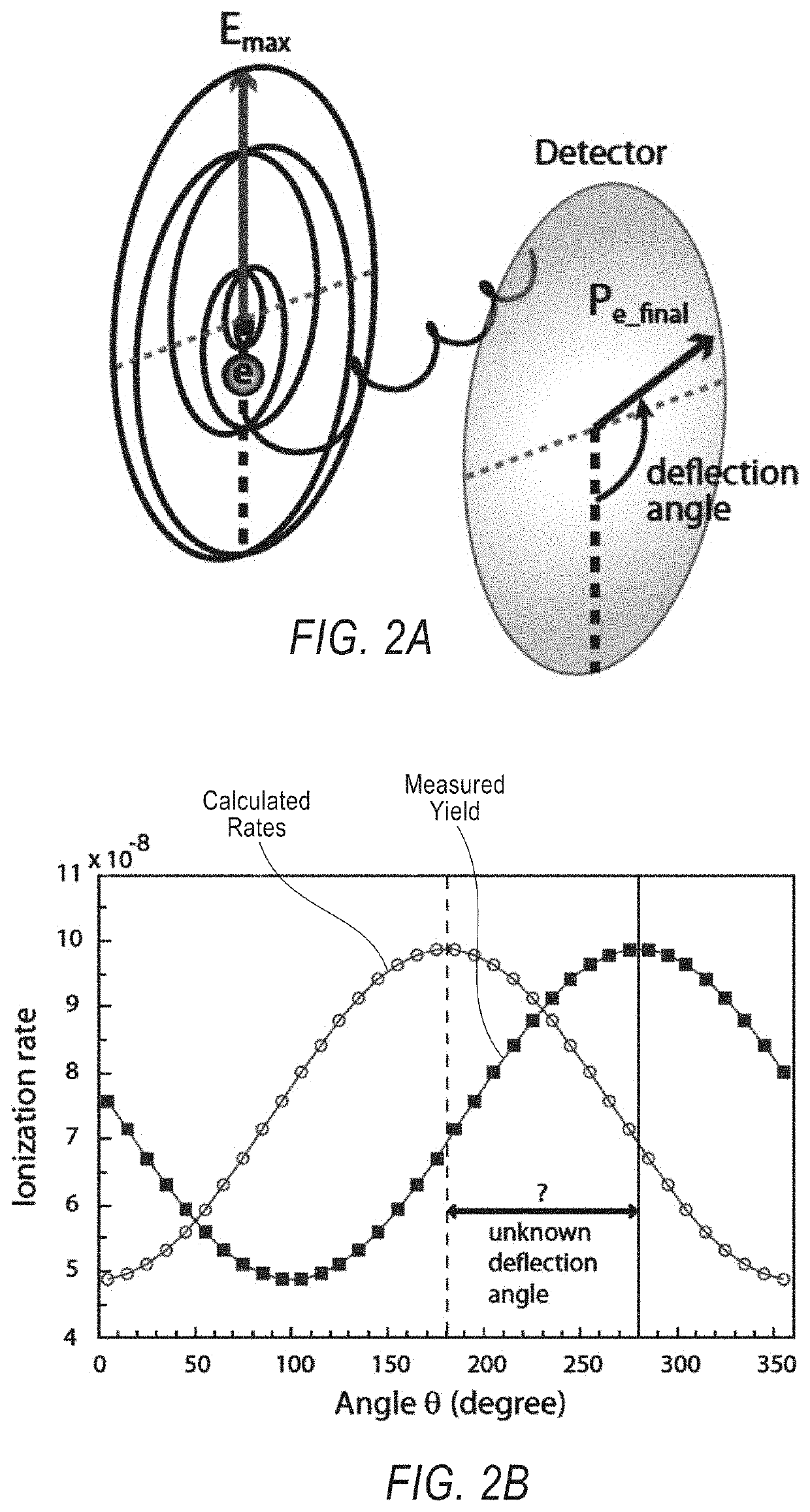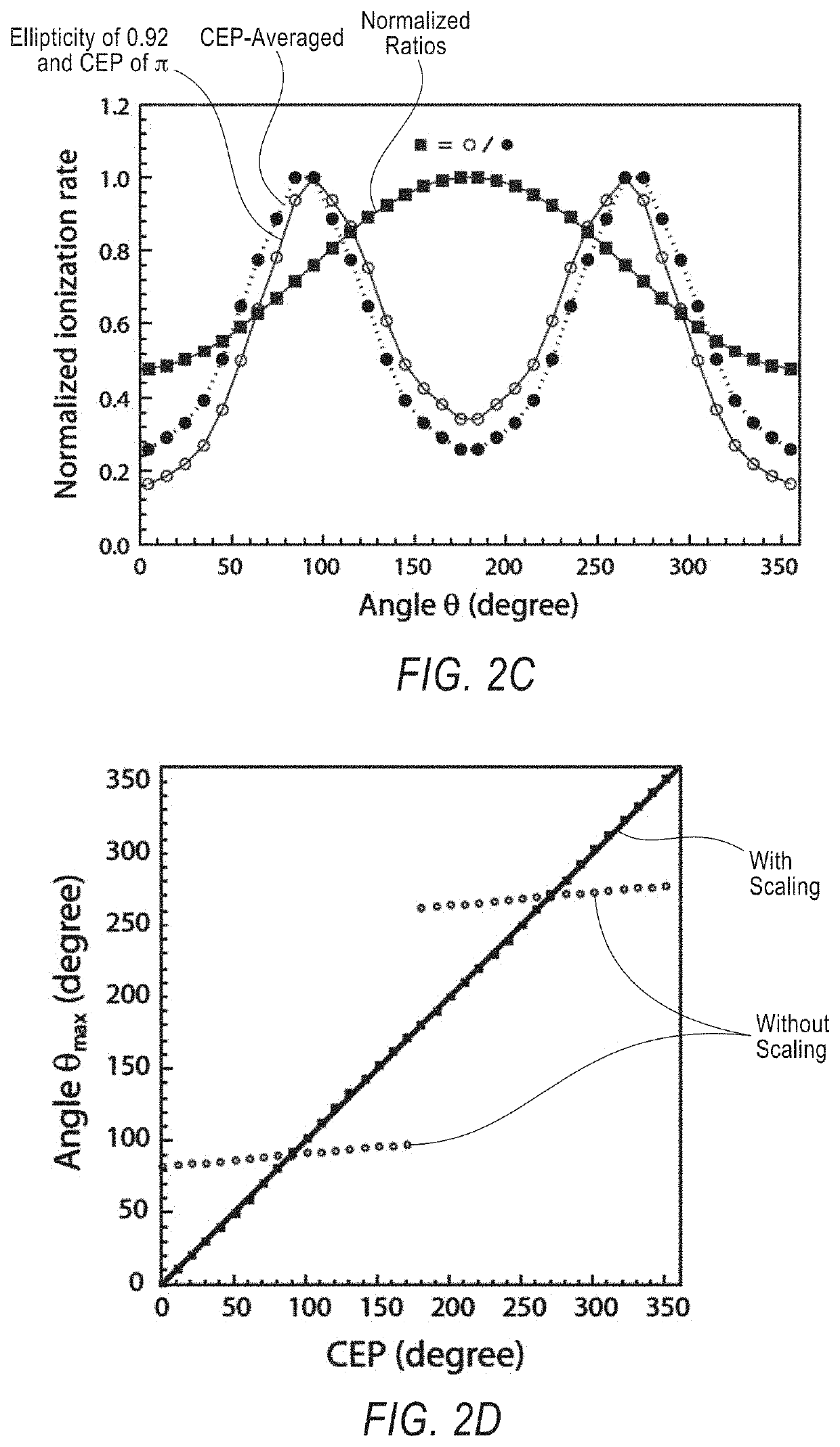System and method for determining absolute carrier-envelope phase of ultrashort laser pulses
- Summary
- Abstract
- Description
- Claims
- Application Information
AI Technical Summary
Benefits of technology
Problems solved by technology
Method used
Image
Examples
Embodiment Construction
[0030]A system and method are disclosed for determining the absolute carrier-envelope phase of ultrashort laser pulses. Disclosed is a system and method which can measure the absolute CEP directly for both linearly and elliptically polarized light without resorting to theoretical calibrations.
[0031]According to the disclosure, the absolute CEP of each individual pulse can be measured with an angular steaking technique using elliptically polarized strong fields instead of circularly polarized light. Employing elliptically polarized light mitigates complicating factors (Coulomb field deflection and population depletion) and thus allows a direct correlation between the angle of electron ejection and the absolute CEP. This is achieved with single-shot / multi-shot photoelectron imaging using the disclosed apparatus and method that can access the full 2D momentum of electrons in the plane of polarization. This method can also be used for characterizing the absolute CEP of linearly polarize...
PUM
 Login to View More
Login to View More Abstract
Description
Claims
Application Information
 Login to View More
Login to View More - R&D
- Intellectual Property
- Life Sciences
- Materials
- Tech Scout
- Unparalleled Data Quality
- Higher Quality Content
- 60% Fewer Hallucinations
Browse by: Latest US Patents, China's latest patents, Technical Efficacy Thesaurus, Application Domain, Technology Topic, Popular Technical Reports.
© 2025 PatSnap. All rights reserved.Legal|Privacy policy|Modern Slavery Act Transparency Statement|Sitemap|About US| Contact US: help@patsnap.com



